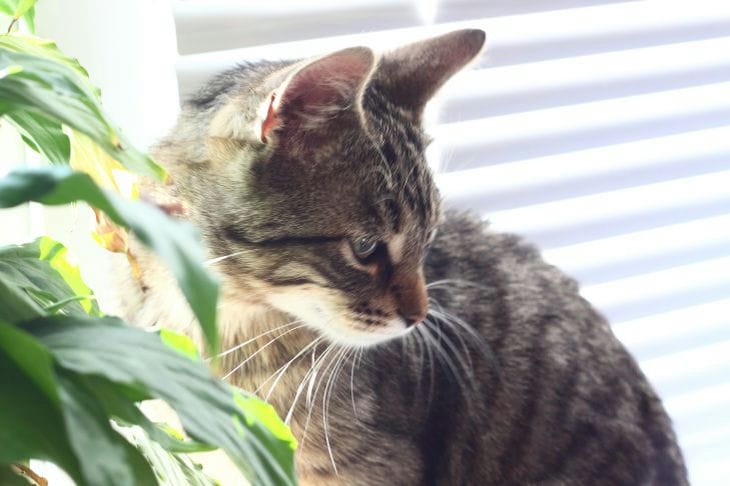Cats that chew on house plants often create problems for pet owners.
This behavior not only harms green pets, but can also be dangerous for the animals themselves. There are effective ways to wean a cat from this bad habit.
Reasons why cats eat plants
Cats' curiosity and attraction to plants can have several explanations. Often cats taste leaves due to boredom or lack of attention.
Sometimes this is due to a lack of certain vitamins and minerals in the diet.
In some cases, animals try to clear their stomachs of hair this way. Understanding the reasons will help you choose the right approach to solving the problem.

Creating a safe environment
The first step in combating unwanted behavior is to ensure the safety of the cat. You should remove or move plants that are toxic to animals. These include dieffenbachia, ficus, aloe and many others.
Instead, you can choose cat-safe species, such as certain types of ferns or cat grass, to satisfy your pet's natural interests without risking their health.
Methods of repelling
There are several ways to make plants unattractive to a cat. You can use special sprays with an unpleasant smell for animals.
Home remedies are also effective: spraying the leaves with a solution of lemon juice or vinegar. Some owners cover the pots with foil or double-sided tape - cats do not like such surfaces.
Distraction
It is important to provide the cat with an alternative. Toys, scratching posts, climbing frames will help to occupy the pet and distract it from the plants.
Interactive toys that stimulate hunting instincts are especially useful. Regular games with the owner will also help reduce interest in plants.
Diet correction
Sometimes the reason for eating plants is poor nutrition. You should consult a veterinarian and, possibly, adjust the cat's diet.
Adding special cat grass or wheatgrass to the menu can satisfy your pet's need for plant-based food.
Physical barriers
If other methods fail, physical barriers can be used. Plants can be placed in places inaccessible to the cat or special protective nets can be used.
Some owners install structures made of plastic bottles or cardboard around the pots.
Training and positive reinforcement
Consistent training can help wean your cat off unwanted behavior. If your pet tries to approach the plant, you should firmly say "no" and distract it with a toy.
It is important to praise and reward your cat when it ignores the plants. Gradually, the animal will learn to associate the plants with a ban.
Creating a comfortable environment
Stress and anxiety can increase unwanted behavior in cats. Providing a calm atmosphere in the home, regular petting and attention will help reduce stress levels in your pet.
Pheromone diffusers can also help calm your cat and reduce his interest in plants.








